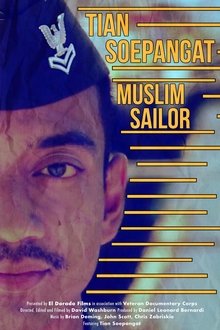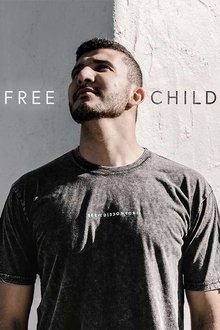Stories of serious traffic accidents caused by texting and driving are told by the perpetrators and surviving victims.
Related Movies

Wallace & Gromit’s Cracking Contraptions: Behind the Scenes (2002)
A documentary about the making of Wallace & Gromit’s Cracking Contraptions.

No Voice (2021)
She now lives many miles away from her mother, who is waiting to hear from her. It is a bittersweet, restless, nostalgic moment, and she remembers those vanished years.

Tehran Is the Capital of Iran (1966)
Tehran Is the Capital of Iran (1966-79) documents life in a deprived district in the south of Tehran. The images of destitution in Tehran's poor areas is accompanied by a variety of spoken accounts: the official viewpoint on the district's living conditions, what the inhabitants have to say, and occasional extracts read out of school manuals. The key element in Shirdel's film is the counterpoint effect he creates with image and sound. His impressively powerful portrayal of social unease helps reinforce the impact of his astonishing documentary images and social themes.

It's a Wonderful Day (1975)
The cartoon based on the works of Alexander Pushkin was created on the basis of drawings from the exhibition "Pushkin through the eyes of children".

New Horizons (2015)
A brief visualisation of NASA’s historic spacecrafts Mariner, Pioneer, Voyager, and Dawn, exploring the solar system, culminating in the New Horizons mission.

Workers Leaving the Lumière Factory (1895)
Working men and women leave through the main gate of the Lumière factory in Lyon, France. Filmed on 22 March 1895, it is often referred to as the first real motion picture ever made, although Louis Le Prince's 1888 Roundhay Garden Scene pre-dated it by seven years. Three separate versions of this film exist, which differ from one another in numerous ways. The first version features a carriage drawn by one horse, while in the second version the carriage is drawn by two horses, and there is no carriage at all in the third version. The clothing style is also different between the three versions, demonstrating the different seasons in which each was filmed. This film was made in the 35 mm format with an aspect ratio of 1.33:1, and at a speed of 16 frames per second. At that rate, the 17 meters of film length provided a duration of 46 seconds, holding a total of 800 frames.

6-18-67 (1967)
6-18-67 is a short quasi-documentary film by George Lucas regarding the making of the Columbia film “Mackenna's Gold”. This non-story, non-character visual tone poem is made up of nature imagery, time-lapse photography, and the subtle sounds of the Arizona desert.

Tian Soepangat: Muslim Sailor (2015)
Tian Soepangat joins the U.S. Navy out of a commitment to helping others. As a Muslim, Tian is uncertain of his shipmates' attitudes toward his religion, and so he hides it. Eventually discovering he doesn't have to hide his faith, he is free to express pride in his heritage.

Free Child (2020)
From leaving Egypt 10 years ago, to almost dying a month ago in a car accident. This film is about the journey in between and the massive role the internet played in the life of prominent Youtuber and Yes Theory co-founder Ammar Kandil.

Night and Fog (1959)
Filmmaker Alain Resnais documents the atrocities behind the walls of Hitler's concentration camps.

Wales (1958)
Wales prides herself in her wealth of natural resources, foundries, mills, and factories. Beyond this modern facade lies another treasure—a rich historical background and ancient lore. The great granite fortresses still remain as reminders that from the struggle and strife was born a pure and distinctive national culture.

The Hills of Qaytariyeh (1969)
A strange and mischievous documentary on an archeological site in the Qaytarieh hills in Tehran. This short narrates the story of the dead people who wished never to be found.

Frans Lanting: The Evolution of LIFE (2015)
A dazzling journey through time via the remarkable images of National Geographic photographer Frans Lanting and his epic "LIFE" project, which presents a stunning interpretation of life on Earth, from the Big Bang through the present.

Thriving with Cerebral Palsy: The Cordell Brown Story (2018)
This documentary chronicles the inspirational story of a man who would not accept "no" for an answer. Born with cerebral palsy, Cordell Brown faced many challenges and most believed he would amount to nothing. Despite the odds stacked against him, Cordell proves that with heartfelt determination he can make a difference in the world.

The Invisibles (2014)
A day in the life of the homeless on the streets of LA, the ones that survive or live in a different reality, youngsters with a broken dream, war veterans, drug addicts, lonely people with no family, victims of the economic or emotional crisis.

The Things I Tell You (2022)
Daniela, a young woman coming out of a breakup, moves to Lisbon for a few months. Feeling lonely, she starts dating Diogo, a happy-go-lucky guy she meets on Tinder. They get to know each other as they explore solitude, love, and friendship, aware that they will soon part ways.

Anonymous (2017)
A short film about the changing face of London Soho and the implications of gentrification on Mimi, an aging transvestite.

Captain Blood: A Swashbuckler Is Born (2005)
This documentary is featured on the DVD for Captain Blood (1935), released in 2005.

Chaplin Today: City Lights (2003)
In 1928, as the talkies threw the film industry and film language into turmoil, Chaplin decided that his Tramp character would not be heard. City Lights would not be a talking picture, but it would have a soundtrack. Chaplin personally composed a musical score and sound effects for the picture. With Peter Lord, the famous co-creator of Chicken Run and Wallace & Gromit, we see how Chaplin became the king of slapstick comedy and the superstar of the movies.